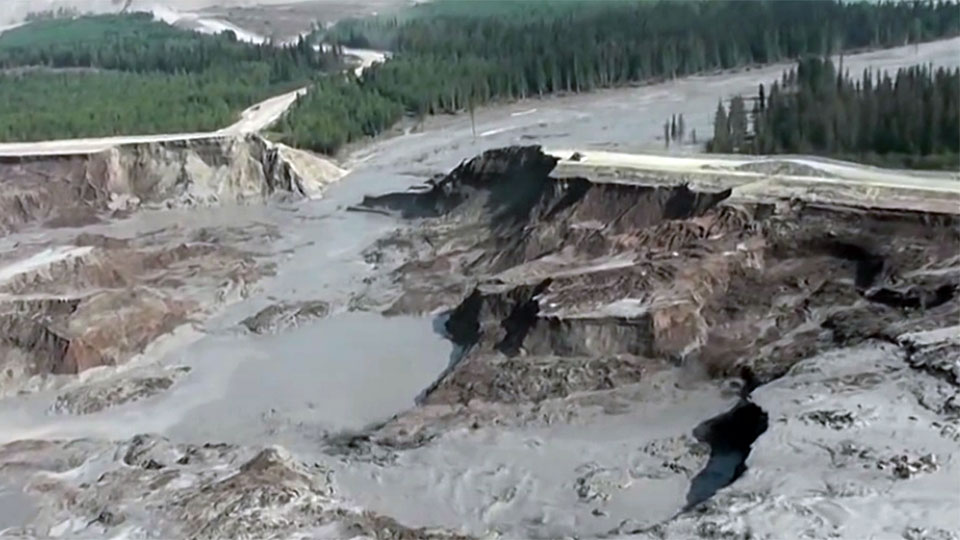
There is a quiet place, known to the Indigenous people as Macehcewik sipohsisol, in the Canadian province of New Brunswick, 60 km (37 miles) north of Fredericton. Traditional chief spasaqsit possesom (a.k.a. Ron Tremblay) describes it as being one of a dwindling number of places where they can gather medicines, hunt, and engage in similar practices that sustain their identity and connection with the land.
In the 1960s, prospectors discovered tungsten there. The amount is huge but because the ore grade is low (the concentration of tungsten in the rock is just 0.05% by weight) for decades nobody wanted to mine it.
That is now changing because, as with most metals, tungsten ore grades are declining as the world’s richest deposits become mined out.
A Vancouver-based mining multinational, Hunter Dickinson Inc., submitted a proposal to the New Brunswick government in 2008 to mine the site and now, as part of a consortium with New Zealand’s Todd Minerals, is nearing the end of the regulatory permissioning process. The proposed mine is called the Sisson Mine after a small brook that runs through the site.
If constructed, the mine, which would excavate 30,000 tons of ore per day for 27 years, will be part of a worldwide trend toward large-volume, low-ore-grade mines.
Although ore grades are declining, we are not in danger of running out of most metals, because the Earth contains vast quantities in low-grade form. However, the trend toward low ore grades does signal another problem: low-grade mines have much larger environmental footprints than do mines that exploit high-grade ores.
The physics are simple: the lower the grade of the ore, the more has to be dug to obtain a given amount of metal. Consequently, the low-grade trend brings big mines, increased land disturbance, increased energy and water use per unit output, and a sharply escalating tailings and waste rock disposal problem. In turn, conflicts that pit the mining industry against land, water, and human communities―often indigenous communities given the rural location of most ore deposits―are accumulating like mining capital itself.
Worldwide, the most prevalent mining environmental problem is potential acid generation (PAG) in the waste rock and tailings. It occurs when rock contains sulphidic minerals; these include the common mineral pyrite (iron sulphide), which is present at Macehcewik Sipohsisol. On exposure to air, sulphidic minerals oxidize to form sulphuric acid; thus when large quantities are brought to the surface in a geologically short period, as in mining, and especially if ore is crushed into a fine powder as is usual in the first stages of refining, sulphuric acid can accumulate to toxic levels in the vicinity of the mine. At Macehcewik Sipohsisol the problem is compounded by the presence of arsenic, which would be dissolved by the acid and carried into surface and groundwater.
The conventional solution to PAG is to sequester the tailings and waste rock in a tailings pond: the presence of a few meters of water over the waste keeps air away so that acid generation is reduced; and any toxins that do form are contained in the pond rather than running off into the environment.
The United Nations International Commission on Large Dams (ICOLD) says that tailings dams are the largest human-engineered structures on Earth. Even more significant than their size is the time during which they must endure. Because tailings can retain their acid-generating potential for thousands of years, tailings ponds and the dams which contain them must be designed as permanent structures. Geophysicist and mining environmental consultant David Chambers gives 10,000 years as a general figure for the design life required of these “landforms”, and says that another, more whimsical definition of the required lifetime is “until the next ice age.”
“Water moves and flows through deep aquifers, springs, bogs, marshes, lakes, rivers and into the ocean tides throughout Wolastokuk our homeland. Water is life!” says spasaqsit possesom (Tremblay) at a press conference of Indigenous leaders, environmentalists, and local residents who oppose the dam.
Tailings dam failures can have devastating consequences. Tailings, which are usually in the form of a wet slurry, can flow out of a breach with great destructive force and also inflict longer-lasting damages such as cementing of land and siltation of rivers. For example, a tailings-dam break at the Samarco iron mine in Brazil in 2015 flattened 1000 hectares of forest and paved it with inorganic mud; and sent a silt plume 600 kilometers downriver, suffocating fish and killing other aquatic organisms by sudden change in acidity and temperature and by photosynthesis-blocking turbidity – stopping only when it reached the Atlantic Ocean. A smaller tailings dam failure in Brazil in January this year killed more than 230 people.

There is a troubling disconnect between the required longevity of tailings dams and their performance record. A 2002 paper in Geotechnical News estimated the rate of serious tailings-dam failure worldwide since 1970 to be between 1/700 and 1/1750 per dam per year. Even the more optimistic figure means the average tailings dam has a 6 percent chance of failing within a century. The Expert Panel that investigated the large tailings-dam failure that occurred in 2014 at Mount Polley, B.C. found that tailings dams in that province fail even oftener than world average: since 1969, seven have failed there, a rate of 1/590 per dam per year.
Measuring 2km [1.2 miles] wide and 3km [1.9 miles] long, and restrained by a dam 90m [295 feet] high at its deepest point, the Sisson tailings pond would be 7 times the volume of the pond that failed at Samarco.
“Accumulate, accumulate! That is Moses and the prophets!” The words are those of Karl Marx in Capital and describe the fundamental character of capital which is to expand itself, bringing ever larger spheres of human activity and the natural world under its control.
It is not in the nature of capitalism for firms to take account of risks that extend much beyond their own lifetimes; usually they must focus on out-accumulating their competitors in the short and medium terms or die. For mine tailings safety, as with many environmental issues, the consequences are serious.
We have arrived at an epoch in which human technical prowess can alter the conditions of life on a global and multi-millennial scale. The capitalist mode of economic thought, circumscribed as it is by individual profit considerations, is inadequate as a guide in this new reality. Socialism offers a more holistic prototype.












Comments